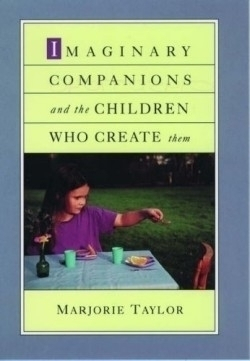Imaginary Companions and the Children Who Create Them
The opening statement in Taylor’s latest work rings true: “Imaginary companions often get bad press.” Citing pop-culture extremes that portray them as demons or the only friends of children living in fantasy worlds, she also notes concerns expressed by parents and professionals —that imaginary friends that seem too real or hang around too long may cause problems in a child’s social development or mental health.
A professor of Psychology at the University of Oregon who has thoroughly researched the matter, Taylor contends the concern is undeserved and has proven it by dissecting findings from her own and numerous other studies on the matter. Presenting a convincing argument for the relative harmlessness of imaginary pals in a child’s life, Taylor defines the concept—distinguishing between imaginary companions and make believe play with dolls and stuffed animals —examining the link with adult-supported beliefs in mythical figures like Santa Claus and the Easter Bunny or other make-believe inventions. She then probes from every “imaginable” angle how the childrens? abilities for fun and companionship—in creativity and intelligence and in making real friends—were affected by fears, trauma and sadness, loneliness, communication and more. Taylor’s findings reveal that in almost all cases, imaginary friends did not cause any negative effects and in some instances, even helped the child handle certain situations. From these results, Taylor is able to prove false the generally believed premise that having an imaginary companion means a child is or will become disturbed. For the majority of children who have them—and at least thirty percent do at any one time—it is a normal part of play and in no way predicates future mental health problems.
Although much of the discussion is deeply serious, she lightens the mood with excerpts from interviews with children, admits to her own embarrassment over incidents involving her own child’s imaginary companion and intersperses a few illustrations of children’s drawings of their pals. She also offers an intriguing comparison between Western and Eastern Cultural responses, and even looks at imaginary companions? place in adulthood. This is a book that seemingly answers every possible question and then some; putting the place that imaginary companions have in the lives of children of all ages into reassuring perspective.
Reviewed by
P.C. Voice
Disclosure: This article is not an endorsement, but a review. The publisher of this book provided free copies of the book to have their book reviewed by a professional reviewer. No fee was paid by the publisher for this review. Foreword Reviews only recommends books that we love. Foreword Magazine, Inc. is disclosing this in accordance with the Federal Trade Commission’s 16 CFR, Part 255.

